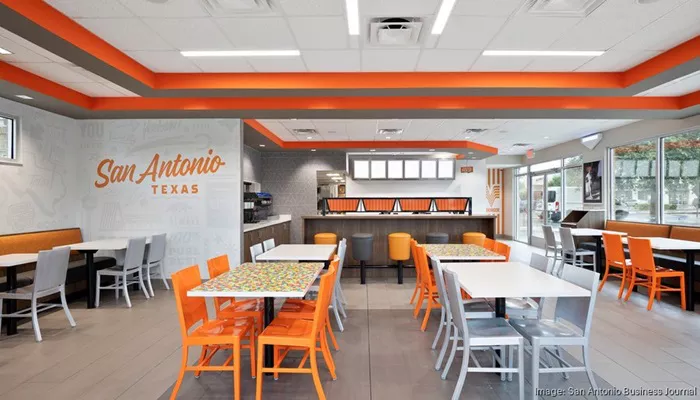Whataburger, a beloved fast-food chain known for its iconic burgers and Texas roots, has a rich history and a complex ownership structure that has evolved significantly over the years. This article delves into the ownership of Whataburger, tracing its journey from a single burger stand to a major player in the fast-food industry.
The Origins of Whataburger
Founded in 1950 by Harmon Dobson in Corpus Christi, Texas, Whataburger began as a small burger stand with a unique vision. Dobson aimed to create a burger so large that it required two hands to hold, and he succeeded spectacularly. The name “Whataburger” was inspired by customers’ reactions to the size of the burgers, which often led them to exclaim, “What a burger!” This simple yet effective branding laid the foundation for what would become a fast-food empire.
By the end of the decade, Whataburger had expanded to 21 locations, including its first restaurant outside Texas in Pensacola, Florida. The chain’s distinctive orange and white A-frame buildings became synonymous with its brand, further solidifying its presence in the fast-food landscape. Tragically, Dobson’s life was cut short in 1967 due to a plane crash, but his legacy continued through his family and the employees who embraced his vision.
Family Ownership And Expansion
After Harmon Dobson’s death, his widow Grace Dobson took over the company. Under her leadership, Whataburger continued to grow rapidly. By 1980, there were over 200 locations across twelve states.
The company remained family-owned for decades, with Dobson’s children—Tom, Lynne, and Hugh—eventually taking on leadership roles.
In 1993, Tom Dobson became president and CEO of Whataburger. His tenure saw further expansion and innovation within the menu and operations. The company introduced new items like breakfast taquitos and expanded its footprint significantly. By the late 1990s and early 2000s, Whataburger had established itself as one of the largest hamburger chains in the United States.
The Shift in Ownership
In June 2019, Whataburger underwent a significant transition when BDT Capital Partners, a Chicago-based investment firm specializing in family-owned businesses, acquired a majority stake in the company.
This marked a dramatic change from its long-standing family ownership model that had persisted for nearly 70 years. The decision to sell was met with mixed reactions from loyal customers in Texas who cherished Whataburger’s family-oriented roots.
Despite this change in ownership structure, the Dobson family retained a minority stake in the company. This arrangement allowed them to maintain some influence over the brand while benefiting from BDT Capital Partners’ resources and expertise in scaling operations. The investment firm is known for its strategic guidance rather than direct management interference, which has been crucial for maintaining Whataburger’s identity during this transition.
Leadership Changes
Following the acquisition by BDT Capital Partners, Ed Nelson was appointed as CEO of Whataburger in August 2020. Nelson had been with the company for over 16 years and was seen as a stabilizing force during this period of change. He emphasized his commitment to preserving Whataburger’s legacy while steering it toward new growth opportunities.
Under Nelson’s leadership, Whataburger focused on expanding its franchising model after a two-decade hiatus from franchising operations. This strategy aimed to increase market penetration while ensuring that existing company-owned locations maintained their high standards of quality and service.
In late 2024, Nelson announced his retirement as CEO after successfully navigating the company through challenging times marked by pandemic-related disruptions and operational adjustments. He was succeeded by Debbie Stroud, who had served as Chief Operating Officer since her hiring in 2022. Stroud brought extensive experience from her previous roles at McDonald’s and Starbucks, positioning her well to lead Whataburger into its next chapter.
Current Ownership Structure
As of now, Whataburger operates over 1,000 locations across 16 states and is recognized as one of the largest fast-food chains in America. While BDT Capital Partners holds a majority stake in the company, the Dobson family’s ongoing involvement ensures that Whataburger remains true to its roots.
The brand continues to emphasize its commitment to quality food made from fresh ingredients. It has also maintained its signature customer service approach that has endeared it to millions of fans across Texas and beyond.
Community Engagement And Brand Loyalty
Whataburger’s success can be attributed not only to its delicious menu offerings but also to its deep connection with local communities. The chain actively engages with customers through various initiatives that promote local involvement and support charitable causes.
The company’s employees are referred to as “Family Members,” reflecting its culture of inclusivity and care. This approach has fostered strong brand loyalty among customers who view Whataburger as more than just a fast-food restaurant; it is considered part of their community fabric.
Conclusion
Whataburger’s journey from a single burger stand to a major fast-food chain exemplifies resilience and adaptability in an ever-changing industry landscape. While ownership has shifted from family-led operations to an investment firm model, the core values instilled by Harmon Dobson continue to guide the brand today.
The combination of strategic leadership under Ed Nelson and Debbie Stroud along with ongoing community engagement ensures that Whataburger remains not only relevant but also beloved by its customers. As it continues to grow under new ownership while honoring its heritage, Whataburger stands as a testament to what can be achieved through dedication to quality food and exceptional service.
Related topics:
- When Is The Buffalo Chicken Sandwich at Whataburger?
- What Is on A Sweet And Spicy Bacon Burger at Whataburger
- Does Burger King Make Milkshakes

